How to use the Console app for troubleshooting
Posted on
by
Kirk McElhearn
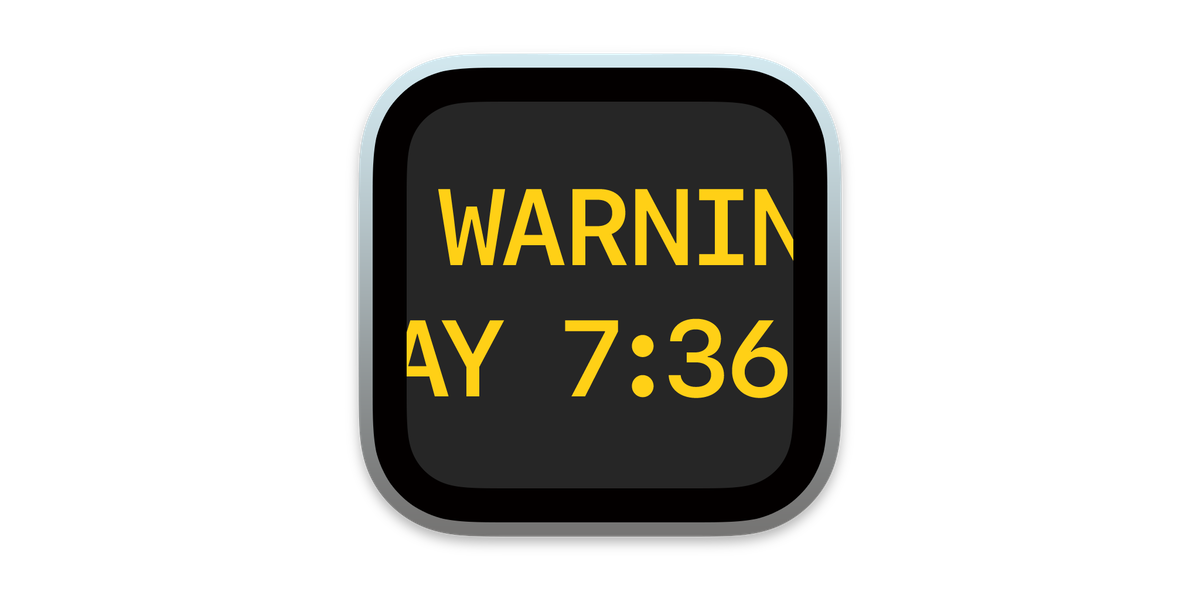
Troubleshooting computer problems can be quite complex, but fortunately there are some tools that are included with macOS that can help. One of these is Console, located in your /Applications/Utilities folder. Console displays logs and error messages that, in some cases, can help you pin down the cause of your troubles. Here’s how you can use this app to help troubleshoot issues with your Mac.
Both macOS itself and Mac apps create lots of logs: files with statements about what the apps have done, along with any errors. These errors aren’t always severe enough to cause an app to crash, but the source of the errors can cause an app to be sluggish or prevent it from accomplishing its tasks completely.
Console’s role is to collect, display, and sort logging information on your Mac. It shows a plethora of messages, and as you watch the app you’ll see dozens of messages each second. Most of these are benign; they don’t indicate problems, but merely specify that an event that has occurred.
When you launch Console, you won’t see any messages: the window says Start streaming.
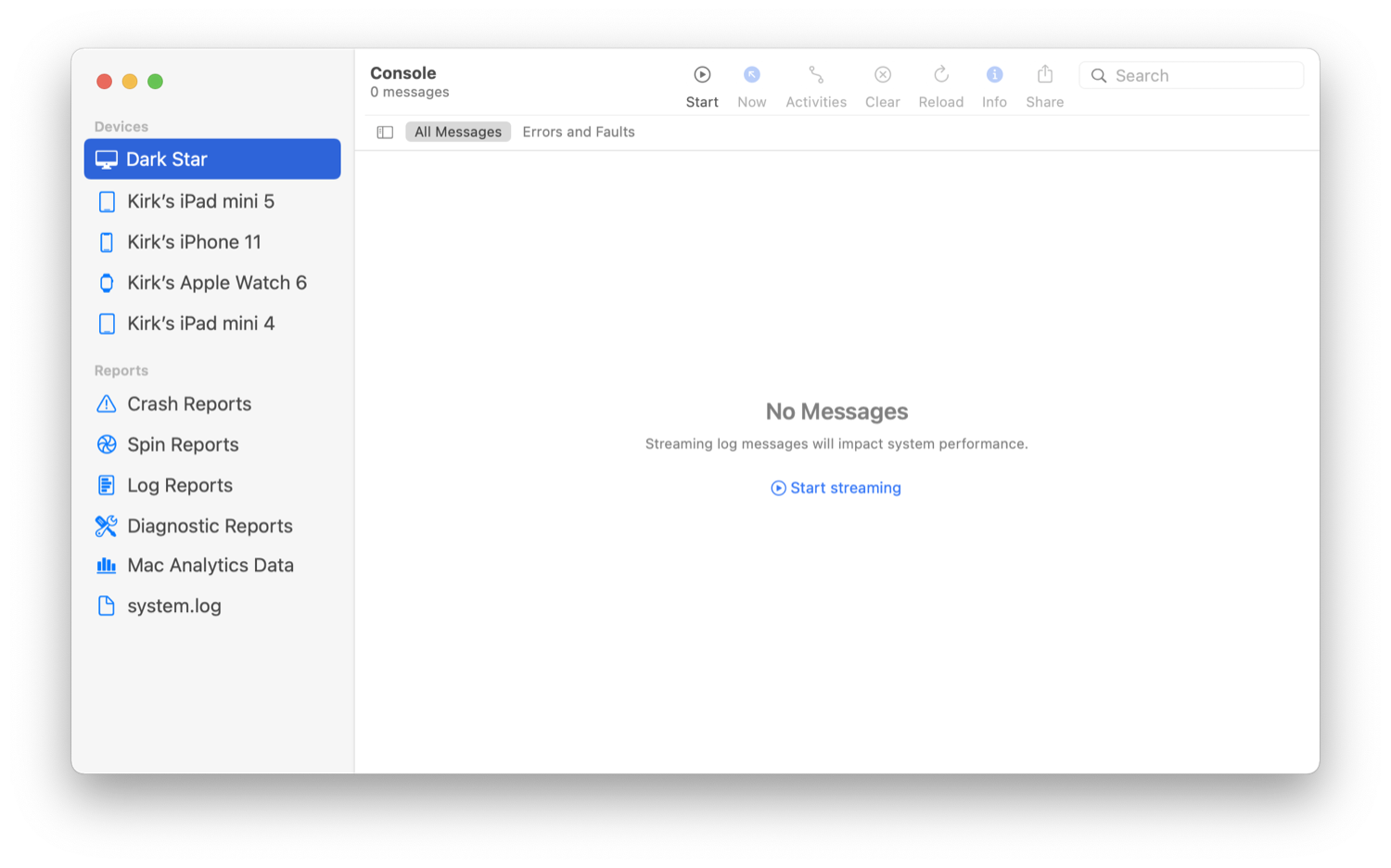
You’ll note that, in the screenshot above, there are a number of devices in the sidebar; Dark Star is my iMac, and below that you can see two iPads, an iPhone, and an Apple Watch. Console can connect with these devices to display their messages, if they are on the same wi-fi network.
To display messages on an Apple Watch, you’ll have to tell the watch to trust the computer; click the Apple Watch entry in the sidebar, and your watch will ask you whether you want to trust the Mac, and require you to enter your passcode to approve this.
If you select a device and click Start streaming, Console shows all messages that are generated on that device. These messages fill the window very quickly; you can see that there are more than 24,000 messages in the view below, and hundreds get added every second. They can be hard to read: to pause their display, click the Pause button in the toolbar.

Log messages are often longer than can be displayed in the top section of the Console window, so if you click a message, you’ll see it in the bottom pane. You may see messages for a specific app — Messages, above — or for a process, which is an app, or a part of macOS, that runs in the background. There are two such processes in the above screenshot: runningboardd and trustd. Your Mac has hundreds of processes like this.
If you click Errors and Faults, you’ll only see those types of messages, indicated by yellow dots (errors) or red dots (faults). Faults are more severe than errors, but they may not be fatal.
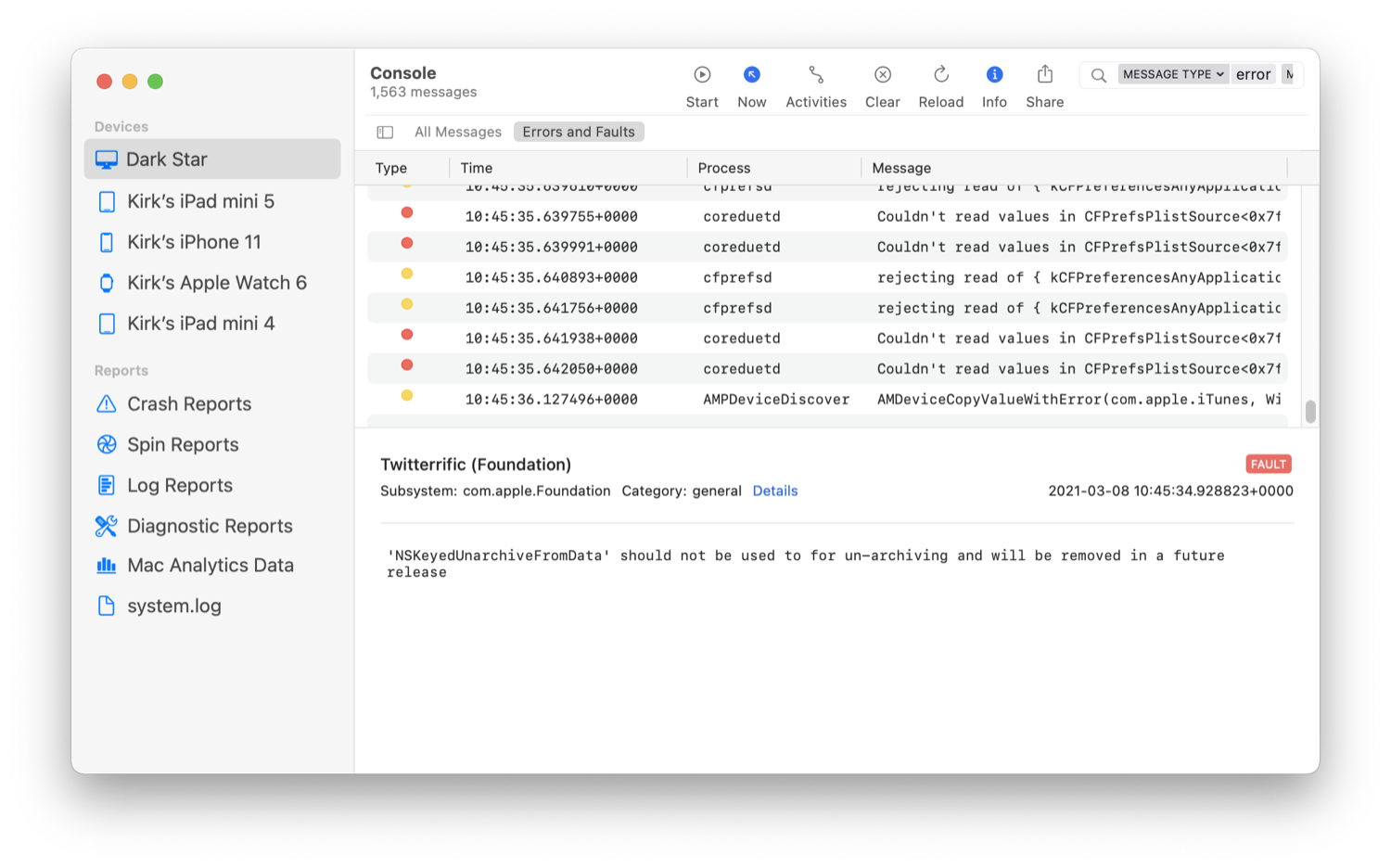
Your Mac generates lots of “errors” in its logs, but you shouldn’t worry about them, unless you are experiencing an issue with a specific app. This is important to know, because phone tech support scammers often try to convince victims there’s a serious problem by telling them to look at the Console app and pointing to these errors.
You can filter log entries by typing in the search field at the top of the window and pressing Return. For example, in the screenshot below, I’ve searched for Safari, and see the following log items:
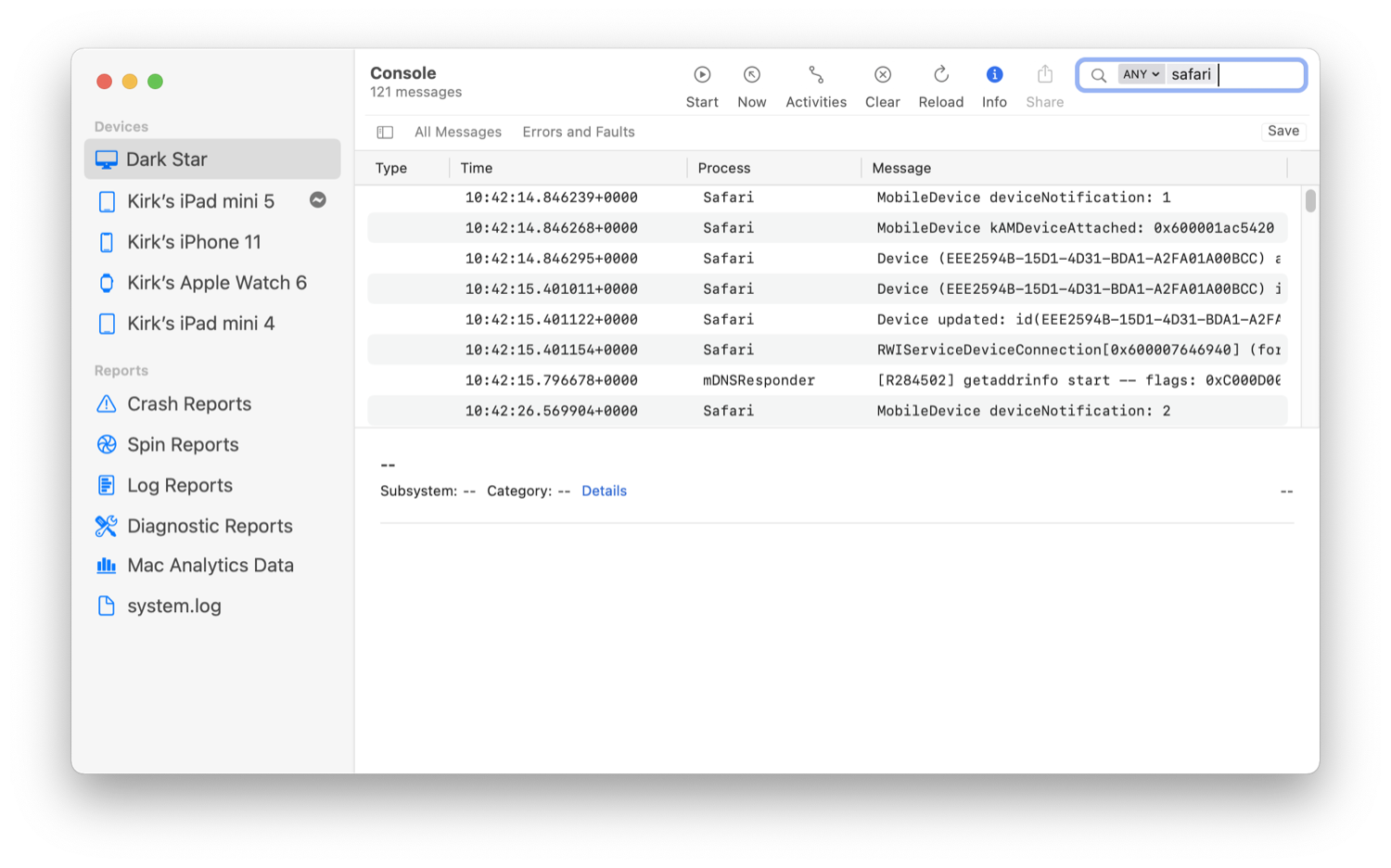
If you have an app that is misbehaving or crashing, it’s a good idea to check Console. Search for that app’s name, and look to see if there are any error or fault messages. If you see the same message repeated often, try googling it (but without any specific information, such as date, time, etc.). In most cases, you’ll find some web pages or forum posts discussing these messages. This may take a fair amount of spelunking, but sometimes it’s the best way to get an idea of what’s gone wrong.
Note that you can set up complex queries in the search field. In the screenshot above, you’ll see Any next to Safari in the search field. Click Any to see a number of options, such as Process, Message Type, and more. There are also operators such as Contains, Does not Contain, etc. And you can save a search by clicking the Save button at the right, just below the toolbar. If you do this, it adds a “favorite” in the bar, next to All Messages and Errors and Faults. You may want to do this if you have problems with a specific app and want to check it from time to time.
If you have an app that crashes often, click Crash Reports in the sidebar; this displays crash logs. You won’t be able to interpret these crash logs unless you’re a developer, but they’re very helpful to send to app developers when you do have problems.
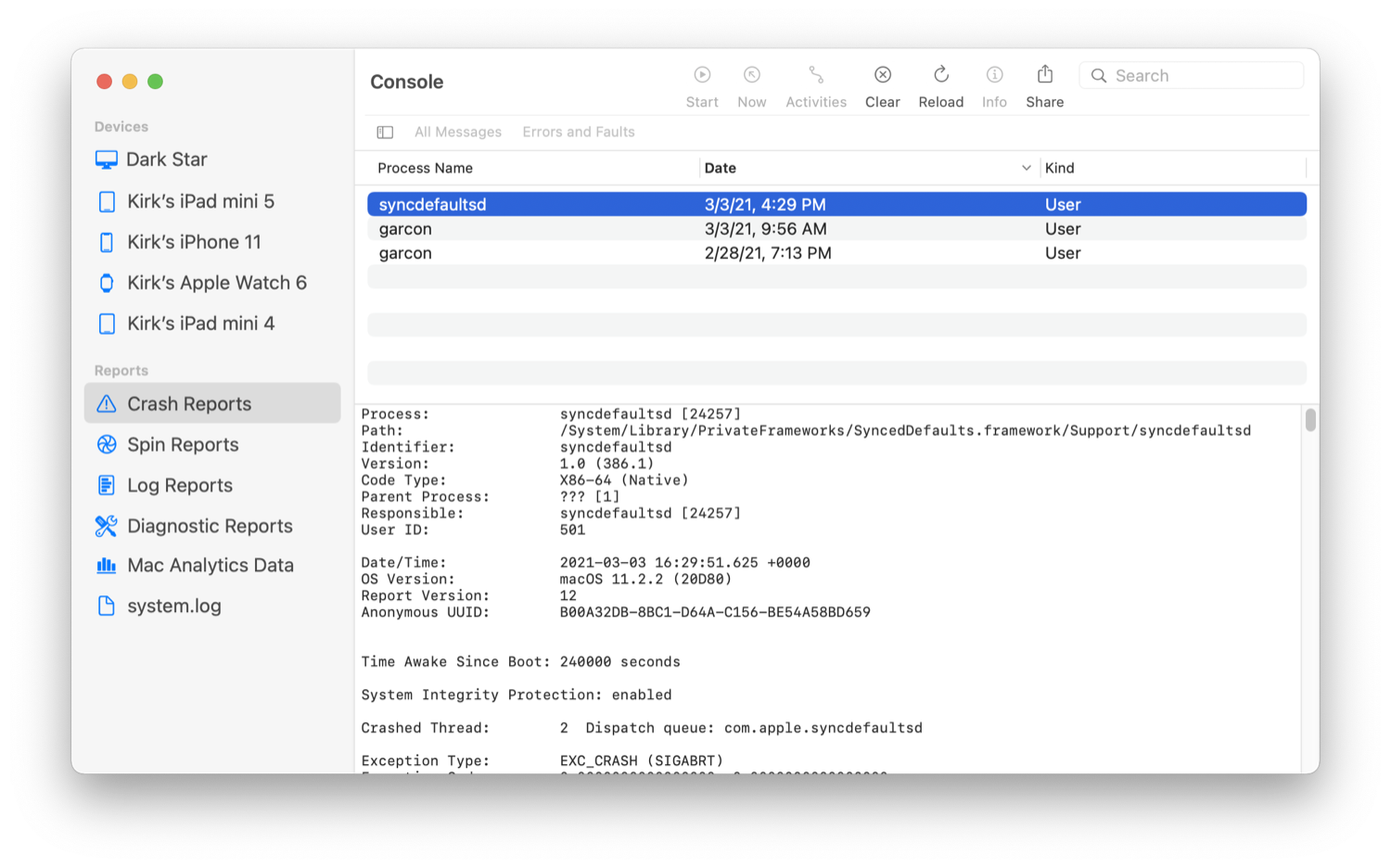
Diagnostic reports can also be useful to developers; they include information about app issues that aren’t crashes.
Right-click on a crash report or diagnostic and choose Reveal in Finder to find the log so you can send it to the developer.
You’ll see other log folders and reports in the sidebar, such as Spin Reports, Log Reports, and more. And system.log is the full log of all the messages on your device, in plain text form. You’ll need to be logged in as an administrator to view this log, and it’s very long and complex, so you’ll only want to look at it if you’re seeking a specific event or issue.
Console can be a bit unwieldy if you’re not experienced in the type of messages that computers log, but it could be the tool that helps you find what’s causing a problem on your Mac. Next time you face problems with apps that hang or crash, check out Console and see if it helps.